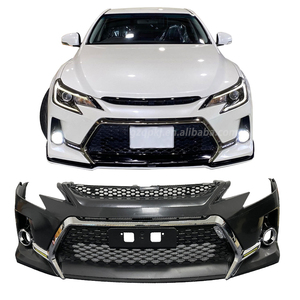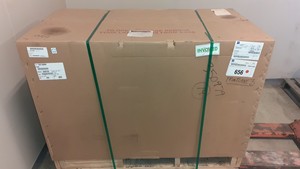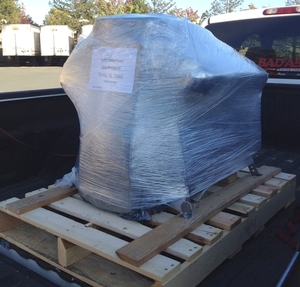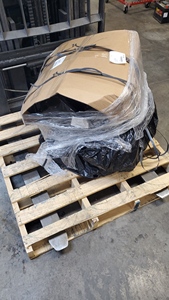Toyota 3SGTE Engine Generations
The Toyota 3SGTE engine is a high-performance, four-cylinder, 2.0-liter, DOHC engine equipped with a turbocharger. It features an aluminum alloy cylinder head and cast iron cylinder bore, making it both durable and powerful. This engine was predominantly used in Toyota's performance-oriented All-Stars models, particularly in the Celica GT-Four series.
As a premier member of Toyota's 3S engine family, the 3SGTE has evolved through five distinct generations since its introduction in 1986, each bringing significant improvements in performance and efficiency.
Gen 1 (Mark I)
Years: 1986-1989
Models: ST165 Celica GT-Four
Power: 185-190 HP
Notable: Initial turbocharged version with CT26 turbocharger
Gen 2 (Mark II)
Years: 1990-1993
Models: ST185 Celica GT-Four
Power: 200-225 HP
Notable: Improved intercooler and modified intake
Gen 3 (Mark III)
Years: 1994-1999
Models: ST205 Celica GT-Four
Power: 240-255 HP
Notable: Enhanced turbocharger and stronger internal components
Gen 4 (Mark IV)
Years: 2000-2005
Models: ST243/ST246 Celica GT-Four
Power: 260-275 HP
Notable: Variable valve timing and improved fuel efficiency
Gen 5 (Mark V)
Years: 2004-2008
Models: ST263/ST264 Celica GT-Four
Power: 280-295 HP
Notable: Advanced electronics and emissions controls
| Generation | Years | Key Models | Major Improvements |
|---|---|---|---|
| Mark I | 1986-1989 | ST165 Celica GT-Four | Original design, CT26 turbocharger, 185HP |
| Mark II | 1990-1993 | ST185 Celica GT-Four | Improved intercooler, water-to-air system, 200-225HP |
| Mark III | 1994-1999 | ST205 Celica GT-Four | CT20B turbocharger, stronger internals, 240-255HP |
| Mark IV | 2000-2005 | ST243/ST246 Celica GT-Four | Variable valve timing, improved efficiency, 260-275HP |
| Mark V | 2004-2008 | ST263/ST264 Celica GT-Four | Advanced electronics, emissions control, 280-295HP |
Evolution Insight: Each generation of the 3SGTE engine brought significant improvements in power, efficiency, and reliability. The engine evolved from a modest 185HP in its first generation to nearly 300HP in its final form, showcasing Toyota's commitment to continuous engineering advancement.
Specifications and Maintenance of the Toyota 3SGTE Engine
Understanding the detailed specifications of the Toyota 3SGTE engine is essential for proper maintenance and optimal performance. This high-performance turbocharged engine requires specific attention to various systems to ensure longevity and reliability.
Engine Specifications
- Displacement: 2.0 liters (1,998 cc)
- Configuration: Inline-4 cylinder
- Valve System: DOHC (Dual Overhead Camshaft)
- Compression Ratio: 8.5:1 (varies by generation)
- Bore × Stroke: 86mm × 86mm
- Power Output: 185-295 HP (depending on generation)
- Torque: 190-320 Nm (depending on generation)
Turbocharger System
- Turbo Type: CT26/CT20b (varies by generation)
- Boost Pressure: 7-12 psi (stock, varies by generation)
- Intercooler: Air-to-air or water-to-air (varies by generation)
- Wastegate: Internal (early gens) or external (later gens)
- Boost Control: Mechanical (early) to electronic (later)
Comprehensive Maintenance Guide
Oil and Filter System
Regular oil changes are critical for the 3SGTE given its high-performance nature and turbocharger system.
- Oil Type: 5W-30 or 10W-40 synthetic (high-temperature rated for turbocharged engines)
- Change Interval: Every 3,000-5,000 miles (more frequent for high-performance driving)
- Filter Quality: Use OEM or high-quality aftermarket filters specifically designed for turbocharged engines
Air Intake System
Clean airflow is vital for turbo efficiency and engine performance.
- Inspect air filter every 10,000 miles, replace as needed
- Check intercooler and associated piping for leaks or damage
- Clean Mass Air Flow sensor with appropriate electronics cleaner
- Inspect turbocharger for shaft play and compressor wheel damage
Cooling System
Turbocharged engines generate significant heat requiring an efficient cooling system.
- Replace coolant every 30,000 miles with manufacturer-specified coolant
- Inspect radiator for blockages and clean fins as needed
- Check water pump operation and timing belt tensioner
- Verify proper thermostat operation to maintain optimal temperatures
Fuel System
Proper fuel delivery is essential for maintaining power and efficiency.
- Use 91+ octane fuel for optimal performance
- Replace fuel filter every 30,000 miles
- Inspect fuel injectors for proper spray pattern and clean as needed
- Check fuel pressure regulator operation, especially for consistent boost conditions
Ignition System
Reliable ignition is crucial for turbocharged engine performance.
- Replace spark plugs every 20,000-30,000 miles with iridium or platinum plugs
- Inspect ignition coils and wiring for deterioration
- Check timing regularly to ensure proper ignition sequence
- Consider colder heat range plugs for modified engines
Engine Timing
Precise timing is critical for 3SGTE performance and longevity.
- Replace timing belt every 60,000 miles (crucial maintenance item)
- Inspect tensioners and idler pulleys when replacing timing belt
- Check cam timing regularly on modified engines
- Consider upgraded timing components for high-performance applications
Critical Warning: The timing belt replacement is arguably the most important maintenance item for the 3SGTE engine. Failure of this component can lead to catastrophic engine damage as this is an interference engine. Never exceed the recommended replacement interval, and consider earlier replacement for heavily modified or high-mileage engines.
How to Choose a Toyota 3SGTE Engine
Selecting the right Toyota 3SGTE engine requires careful consideration of several factors, whether you're a retailer stocking inventory or an enthusiast looking for an engine swap or replacement.
Market Assessment
Understanding market demand is crucial for retailers or those buying for potential resale value.
- Research popular vehicles in your region that utilize the 3SGTE
- Identify which generation is most sought after by enthusiasts
- Consider regional motorsport regulations that might favor certain specifications
- Evaluate the availability of supporting parts and specialists in your area
Engine Condition Factors
When choosing between new, remanufactured, or used engines, consider these key factors:
- New/Remanufactured: Higher cost, but lower maintenance and longer lifespan
- Used JDM Import: Often lower mileage but unknown maintenance history
- Locally Sourced Used: Can inspect in person, easier to verify history
- Rebuilder's Special: Lowest cost but requires significant expertise and investment
| Selection Criteria | Importance | Considerations |
|---|---|---|
| Compatibility | Critical | Verify proper generation for your vehicle model or planned swap, check for necessary adaptation components |
| Budget | High | Consider total cost including purchase, installation, modifications, and long-term maintenance |
| Performance Goals | High | Later generations offer more power stock, but earlier generations may be more affordable to modify |
| Source Reliability | Critical | Purchase from reputable suppliers with verifiable reviews, warranty offerings, and after-sales support |
| Documentation | Medium | Look for engines with maintenance records, known history, and verifiable mileage |
| Modifications | Variable | Determine if stock configuration meets needs or if modification budget should be factored in |
Expert Suggestion: When possible, request compression and leak-down test results before purchasing a used 3SGTE engine. These tests provide valuable insight into the internal condition of the engine that visual inspection alone cannot reveal. For JDM imports, checking the engine's production date can help identify which specific sub-version you're getting, as there were minor updates within each generation.
DIY Toyota 3SGTE Engine Replacement Guide
Replacing a Toyota 3SGTE engine can be a complex but rewarding project for those with mechanical experience. This step-by-step guide will help you through the process, though it's essential to consult the specific service manual for your vehicle model before beginning.
Safety First: Engine replacement involves heavy components and potentially hazardous materials. Ensure you have proper safety equipment including gloves, eye protection, and appropriate lifting devices rated for engine weight. Never work under a vehicle supported only by a jack – always use jack stands or a proper lift.
Preparation and Planning
- Obtain the factory service manual specific to your vehicle
- Disconnect battery negative terminal and wait 15 minutes for systems to discharge
- Gather all necessary tools including engine hoist, support stands, socket sets, and specialized tools
- Prepare a clean, well-lit workspace with sufficient room around the vehicle
- Label all connectors, hoses, and wiring before disconnection
- Take reference photos throughout the process for reassembly guidance
Removing the Original Engine
- Drain all fluids including coolant, oil, and power steering fluid
- Remove the hood for better access (optional but recommended)
- Disconnect all electrical connections, labeled with tape for identification
- Remove intake, exhaust, and intercooler components
- Disconnect all fluid lines, capping them to prevent contamination
- Remove accessory belts and accessories (A/C compressor, power steering pump, etc.)
- Detach transmission (if replacing engine only) or remove as a unit with engine
- Remove engine mount bolts after properly supporting the engine
- Connect engine hoist to lifting points and carefully extract the engine
Engine Transfer and Preparation
- Transfer all necessary components from old engine to new (if applicable)
- Include intake manifold, exhaust manifold, turbocharger, accessories, and sensors
- Replace all gaskets, seals, and wear items during transfer
- Verify timing belt/chain is properly installed and tensioned
- Check all fluid passages for cleanliness
- Install new engine mounts if old ones show wear
- Pre-fill oil filter and prime oil system if possible
Installing the New Engine
- Carefully lower the new/replacement engine into the engine bay
- Align with mounting points and transmission input shaft
- Install and torque engine mount bolts to specification
- Reconnect transmission and torque bolts to specification
- Install accessory brackets and components
- Connect all fluid lines, electrical connections, and vacuum lines
- Install intake and exhaust systems
- Refill all fluids to proper levels using manufacturer-specified fluids
Final Steps and Testing
- Reconnect battery and check for any warning lights
- Turn key to "on" position (don't start) and check for fuel pressure
- Check for any obvious leaks or loose connections
- Start engine and allow to idle while monitoring temperature and oil pressure
- Check for leaks under pressure
- Perform a controlled test drive, gradually increasing engine load and RPM
- Recheck all fluid levels after test drive
- Perform any necessary ECU resets or adaptations
- Schedule follow-up maintenance including oil change after 500 miles
DIY Pro Tip: When transferring components from your old engine to the replacement, take the opportunity to clean or replace parts that would be difficult to access once the engine is installed. This includes the turbocharger, valve cover gasket, intake manifold gaskets, and spark plug tube seals. The small additional cost will be worth the peace of mind and avoided future labor.
Frequently Asked Questions
The Toyota 3S-GTE is a 2.0-liter, turbocharged inline-four cylinder engine from Toyota's S engine family. It features a cast iron block, aluminum cylinder head, dual overhead camshafts (DOHC), and a turbocharger system. This high-performance engine was used in several Toyota models including the Celica GT-Four, MR2 Turbo, and Caldina GT-T. It was produced from 1986 to 2007 through five distinct generations, each offering progressive improvements in performance, reliability, and efficiency.
With power outputs ranging from 185HP in early models to nearly 300HP in later versions, the 3S-GTE established itself as one of Toyota's most celebrated performance engines, particularly in rally racing where it powered Toyota to multiple WRC victories.
Identifying a Toyota 3S-GTE engine can be done through several methods:
- Engine Code Stamp: Look for the engine code stamped on the engine block, typically located on the front of the block near the engine/transmission mating surface
- VIN Decoding: Check the vehicle identification number, where the engine code can be found in the model code section
- Visual Identification: The 3S-GTE is distinguishable by its turbocharger setup, intercooler piping, and distinctive intake manifold
- Generation Differences: Different generations have unique components:
- Gen 1: Small CT26 turbo, no oil squirters
- Gen 2: CT26 turbo with water-to-air intercooler system
- Gen 3: CT20B turbo, side-mount intercooler
- Gen 4/5: Improved electronics, different coil pack design
The Toyota 3S-GTE engine includes several key features that contribute to its performance and reliability:
- Turbocharged Design: Factory turbocharger providing significant power increases over naturally aspirated variants
- Dual Overhead Camshafts (DOHC): Improved valve control allowing for better breathing and higher RPM operation
- High-Strength Block: Cast iron block providing excellent durability for high-boost applications
- Advanced Cooling: Later generations feature improved water jackets and cooling passages
- Piston Oil Squirters: Added in Gen 2 and later for improved piston cooling under high-load conditions
- Intercooling: Air-to-air or water-to-air intercooling systems to reduce intake temperatures
- Sequential Fuel Injection: Precise fuel delivery for optimal combustion
- Coil-On-Plug Ignition: In later generations for more consistent spark delivery
While generally reliable, the Toyota 3S-GTE can experience several common issues:
- Turbocharger Failure: Especially in older units or those with poor maintenance, symptoms include oil leakage, shaft play, or compressor wheel damage
- Oil Leaks: Common from cam seals, oil pump, and turbo oil lines with age
- Timing Belt Failure: Critical issue as this is an interference engine, requiring strict adherence to replacement intervals
- Head Gasket Issues: Can occur with excessive boost or overheating, particularly in modified engines
- Ignition System Problems: Coil packs and igniters can fail, causing misfires
- Fuel Delivery Issues: Aging fuel pumps may struggle to provide adequate flow for the turbo system
- Overheating: Can result from radiator clogging, thermostat failure, or water pump issues
Many of these issues can be prevented with proper maintenance and cautious operation, particularly in heavily modified examples.
The main differences between the Toyota 3S-GTE and 3S-GE engines are:
| Feature | 3S-GTE | 3S-GE |
|---|---|---|
| Induction | Turbocharged | Naturally aspirated |
| Power Output | 185-295 HP (varies by generation) | 140-200 HP (varies by generation) |
| Compression Ratio | Lower (8.5:1 typical) | Higher (10:1-11.5:1) |
| Internal Components | Strengthened for boost | Standard configuration |
| Fuel System | Higher capacity for turbo needs | Standard flow rate |
| Cooling System | Enhanced for heat management | Standard configuration |
| Application | Performance models (GT-Four, MR2 Turbo) | Sport models (Celica, Altezza) |
While both share the same basic block architecture, the 3S-GTE features numerous reinforcements and modifications to handle the increased power and heat from turbocharging. The 3S-GE, particularly in later BEAMS versions, focused on high-revving naturally aspirated performance instead.





































































































































































































































 浙公网安备 33010002000092号
浙公网安备 33010002000092号 浙B2-20120091-4
浙B2-20120091-4